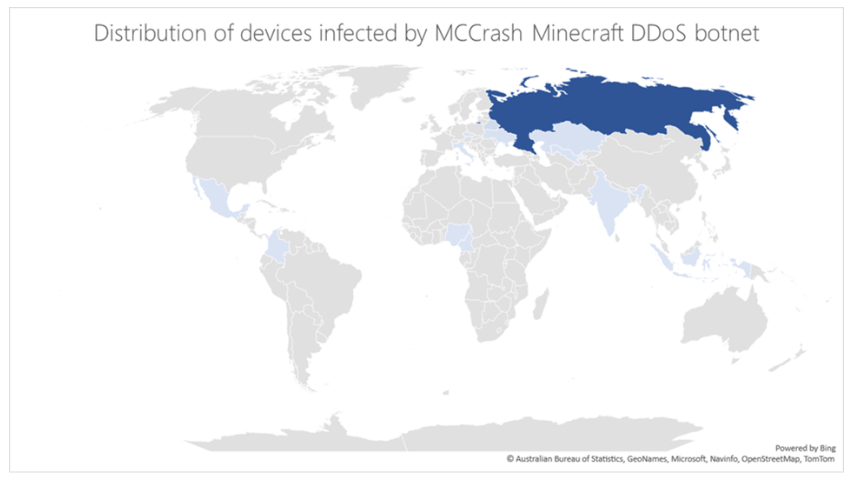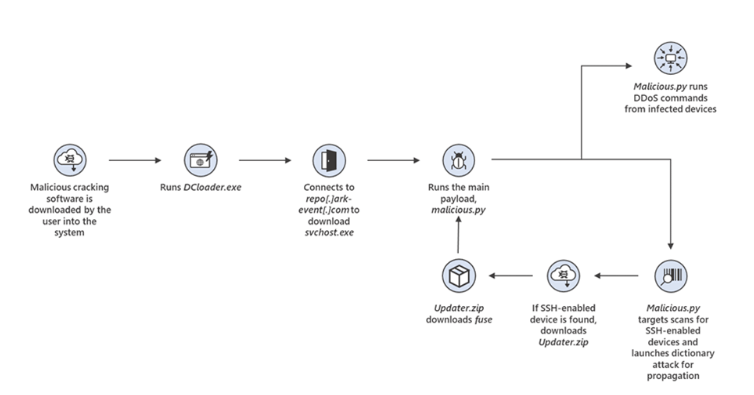Contents:
On Thursday, Microsoft warned users about a cross-platform botnet that targets private Minecraft servers with distributed denial-of-service (DDoS) attacks.
The botnet, known as MCCrash, has a special technique for propagating that allows it to infect Linux-based computers despite its origins in malicious software downloaded on Windows hosts. Cybersecurity researchers from Microsoft are tracking the cluster of incidents as DEV-1028.
The botnet spreads by enumerating default credentials on internet-exposed Secure Shell (SSH)-enabled devices. Because IoT devices are commonly enabled for remote configuration with potentially insecure settings, these devices could be at risk to attacks like this botnet.
The botnet’s spreading mechanism makes it a unique threat, because while the malware can be removed from the infected source PC, it could persist on unmanaged IoT devices in the network and continue to operate as part of the botnet.
Most of the cases have been documented in Russia, but they have also been found in Kazakhstan, Uzbekistan, Ukraine, Belarus, the Czech Republic, Italy, India, Indonesia, Nigeria, Cameroon, Mexico, and Colombia. The company did not offer additional information on the exact size of the campaign.

How Did it Start?
The botnet’s infection starting point seems to be a pool of computers compromised by the installation of cracking programs that provide illegitimate Windows licenses.
The program then serves as a channel for the execution of a Python payload containing the botnet’s core features, such as a scan for SSH-enabled Linux devices in order to initiate a dictionary attack.
When a Linux host is breached using the propagation technique, the same Python payload is deployed to launch DDoS commands, one of which is particularly designed to break Minecraft servers (“ATTACK MCCRASH”), explains The Hacker News.

Microsoft described the approach as “highly efficient,” noting that it is likely marketed as a service on underground forums.
The announcement made by Microsoft Security Threat Intelligence is available here. The company believes that this type of threat emphasizes the significance of enterprises managing, updating, and monitoring not only traditional endpoints but also IoT devices, which are frequently less secure.
If you liked this article, follow us on LinkedIn, Twitter, Facebook, Youtube, and Instagram for more cybersecurity news and topics.










 Network Security
Network Security
 Vulnerability Management
Vulnerability Management
 Privileged Access Management
Privileged Access Management  Endpoint Security
Endpoint Security
 Threat Hunting
Threat Hunting
 Unified Endpoint Management
Unified Endpoint Management
 Email & Collaboration Security
Email & Collaboration Security








